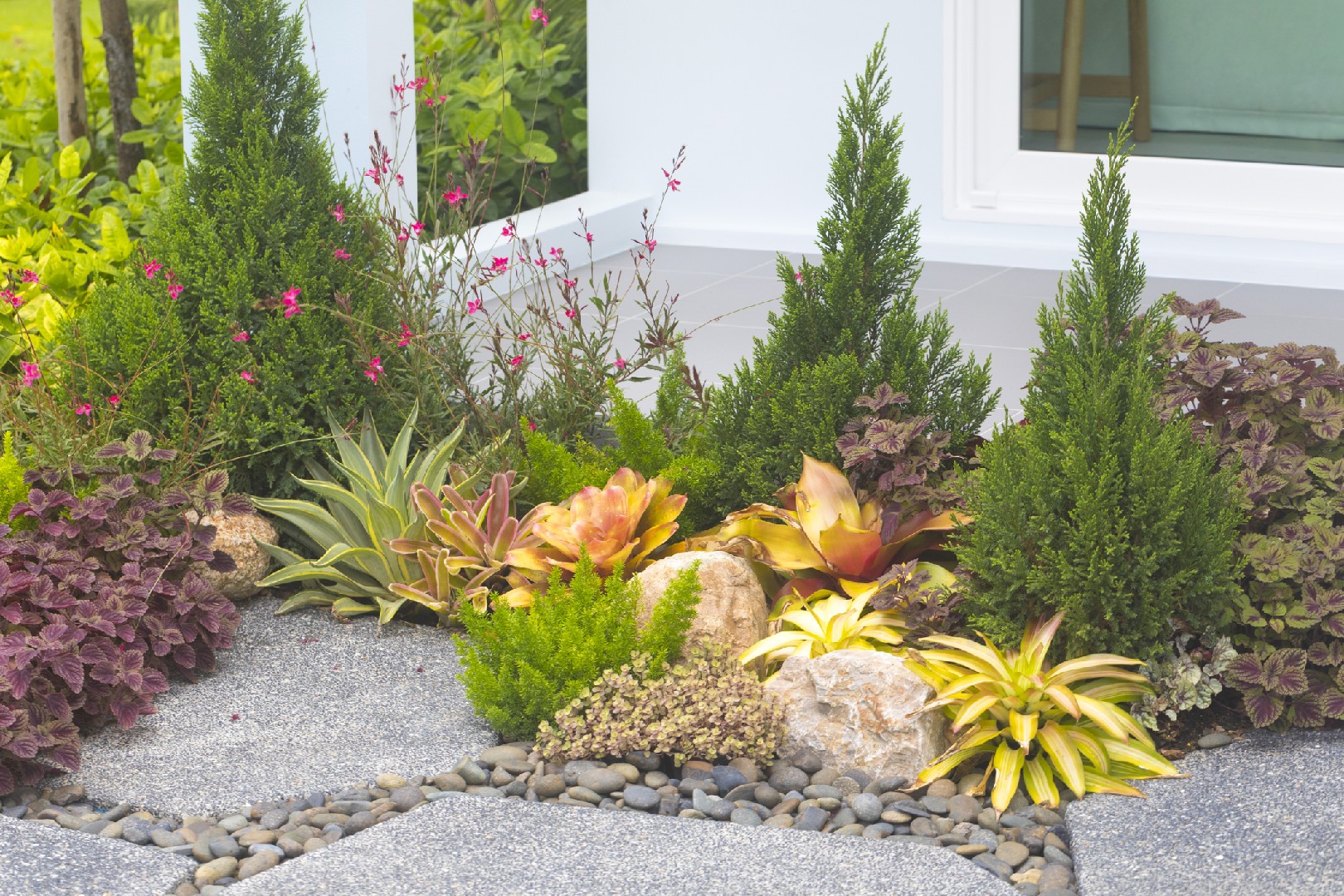![Rectangle]()
Key Features of a Low-Maintenance Landscape
Designing a low-maintenance landscape can save you time and effort while still providing a beautiful and enjoyable outdoor space. By incorporating key features into your design, you can create a stunning landscape that requires less work and maintenance.
One of the first considerations when designing a low-maintenance landscape is selecting plants that require minimal watering and care. Choose native or drought-tolerant plants that are well-suited to your climate. These plants have adapted to the local conditions and require less water, fertilizer, and pest control. Additionally, grouping plants with similar water needs together can make irrigation more efficient and reduce maintenance.
Another important feature of a low-maintenance landscape is the effective use of mulch to minimize weed growth. Lay a layer of organic mulch, such as wood chips or bark, around your plants and in your garden beds. Mulch helps to retain moisture in the soil, suppress weeds, and regulate soil temperature. Applying a 2-4 inch layer of mulch can significantly reduce the time and effort spent on weeding.
Proper placement and grouping of plants is also crucial in reducing maintenance. When designing your landscape, consider the mature size of each plant and ensure they have enough space to grow without overcrowding. This will prevent the need for frequent trimming or pruning. Additionally, grouping plants with similar maintenance requirements together can make it easier to care for them.
Incorporating hardscapes, such as patios, walkways, or decks, is another key feature of a low-maintenance landscape. By reducing the amount of lawn area, you can significantly cut down on mowing and watering. Hardscapes also provide functional outdoor living spaces that require minimal upkeep. Choose materials that are durable and require little maintenance, such as concrete, stone, or composite decking.
To further enhance the practicality of your low-maintenance landscape, consider installing an automated irrigation system. This will ensure that your plants receive the right amount of water without the need for constant manual watering. Set timers or use moisture sensors to efficiently water your plants according to their needs.
In conclusion, designing a low-maintenance landscape involves selecting plants that require less watering and care, using mulch to minimize weed growth, proper placement and grouping of plants, and incorporating hardscapes to cut down on lawn care. By incorporating these key features into your design, you can create a beautiful and practical outdoor space that requires less work and maintenance. Remember to choose plants that are well-suited to your climate, use mulch to suppress weeds, group plants with similar needs together, incorporate hardscapes for functional spaces, and consider installing an automated irrigation system. Following these tips will help you enjoy your landscape more and spend less time on maintenance.





